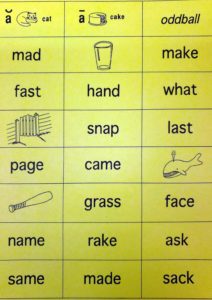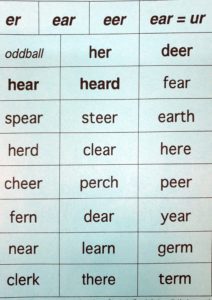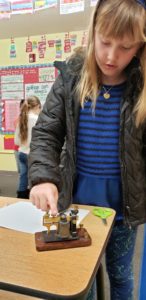
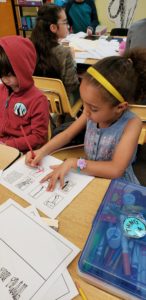 History & Geography
History & Geography
Social Studies:
This week in our unit, Americans Move West, we continued to work on our lap books, learned a song about the Erie Canal, and read about the Gold Rush and the Pony Express. The class got a chance to try out an old telegraph machine. We will be making a covered wagon as a class project in the next couple of weeks. Please send in a small shoe box for this project. Look for more information to come home soon.
Our weekly objectives were to:
• recognize the Oregon Trail and the California Gold Rush
• identify Jedediah Smith and Levi Strauss
• understand how the Pony Express worked
• understand how telegraphs and railroads replaced the Pony Express
Science
This week in our Simple Machine domain we learned about the inclined plane and wedges. We did some demonstrations using both of these. We continued to work on our Simple Machines journals.
Our weekly objectives were to:
• develop an understanding of quantities associated with energy movement and change
• understand interrelationships among science, technology, and human activity and how they can affect the world
• examine how certain tools work and are made to perform specific jobs
English Spelling and Writing
La lectura
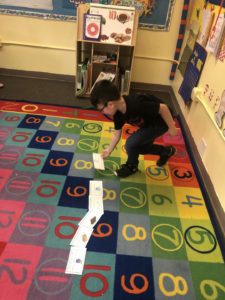 This week we began our new unit Los Fósiles. We read Los fósiles nos hablan del pasado.
This week we began our new unit Los Fósiles. We read Los fósiles nos hablan del pasado.
Our weekly objectives were to:
- review how to spell color words
- review our reading strategies; summarize, making connections, visualizing, and asking questions, during our first read
- review the comprehension skill sequencing during our second read
- play a game to review adjectives
Las matemáticas
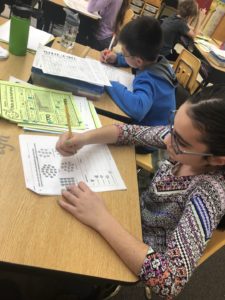
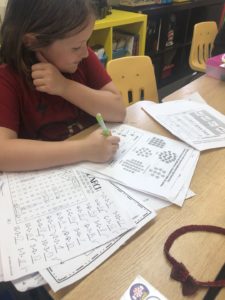 This week we began learning about picture graphs. Our weekly objectives were to:
This week we began learning about picture graphs. Our weekly objectives were to:
- understand how to read information on a picture graph
- identify the four parts of a picture graph (title, categories, pictures, and key)
- draw our own picture graphs
- answer questions about picture graphs
Specialists:

